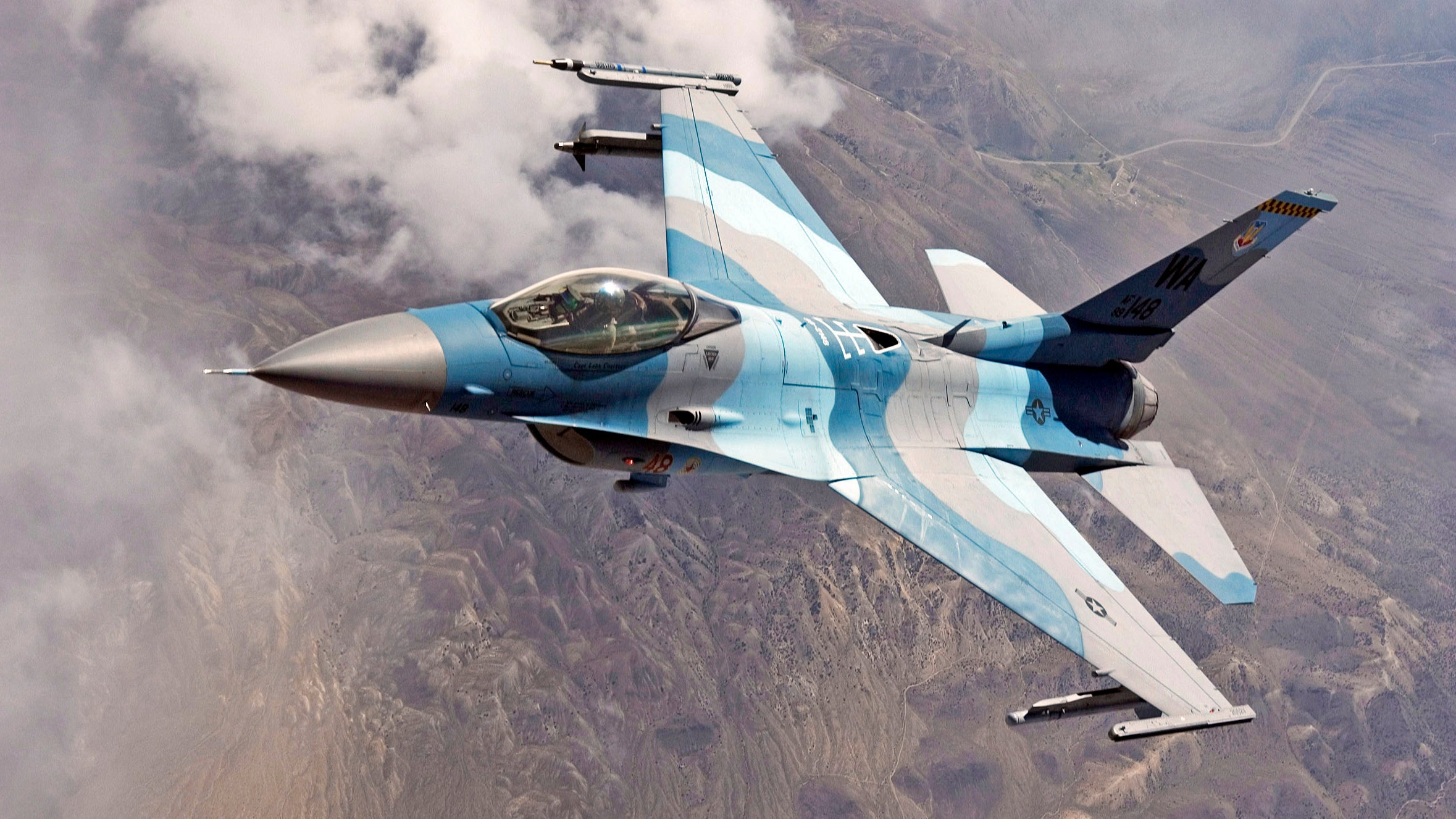In maybe the ultimate form of irony, during a national security crisis, or even an attack on the homeland, the airliner you are flying on could be intercepted by a foreign-looking fighter jet adorned in Russian camouflage with bright red bort numbers on its sides, and in some cases, even big red stars on their wings. That’s because the 64th Aggressor Squadron (64th AGRS), the same unit that provides adversary support training out of Nellis AFB in Las Vegas, Nevada, for exercises like Red Flag, was tasked in 2013 with the air defense mission, according to documents obtained by The War Zone through the Freedom of Information Act and corroborated by officials at Nellis AFB.
Here’s the excerpt from the Nellis AFB 2013-2014 Annual history which describes the establishment of the mission:
Nellis AFB was designated as a site for Operation NOBLE EAGLE Aerospace Control Alert function in mid-late 2013. While the actual mission fell to the 57th Wing’s 64th Aggressor Squadron, 99 ABW was an integral part of the preparation and mission support to include 99 CS, 99 SFS, 99 FSSW and the Base Command Post (99 ABW/CP). This mission had been envisioned under NAFB Plan 7, Air Defense Plan. 2013 and early 2014 saw identification of required facilities and assets needed to execute the mission; by 11 September 2014, First Air Force (I AF), and Continental United States NORAD Region (CONR) Air Forces Northern (AFNORTH) had defined the infrastructure standards and requirements; “for use during the initial planning, project programming, and Site Action Task Force (SATAF) convened to establish or modify tighter alert facilities in support of Operation NOBLE EAGLE (ONE) and Aerospace Control Alert (ACA) homeland defense. Use this document as a starting point to select potential sites and aid in identifying unique site-specific equipment and training requirements.”
By 11 March 2014, all the known requirements and Offices of Primary Responsibility (OPR) were identified and where possible, monetary costs were estimated to procure or modify the facility or equipment needed. AIl parties were working towards a training day on 17 March 2014 to see how the process worked and what “unknown unknowns” were still unidentified; this was followed by a “full-up demo activation” on 27-29 March 2014. Command Post responsibilities for ONE were defined as well, which included “1500 hours’ worth of North American Aerospace Defense (NORAD) Emergency Action (EA) Procedure training, directly contributing to Nellis AFB being the first of nine units to report initial operational capability (IOC) to HQ ACC”; this on top of their already significant workload. On 30 June – 2 July 2014, the 57th Wing conducted an exercise under the USAF’s new inspection system. On 8-9 September, a Site Assistance Visit Team from 1 AF (CONR) AFNORTH visited Nellis AFB for a Provisional Alert Site inspection; while 99 ABW/CP limitations such as lack of some equipment or an Alternate Command Post (see Chapter 4), the team wrote “The Nellis Command Post has a strong ACA program with thorough scenario based training and well developed procedures.”
On 14 October 2014, just after the end of this reporting period, the USAF Warfare Center published USAFWC Instruction 10-203, “Alert Operating Procedures,” which laid out “guidance, establishes procedures and defines responsibilities of the base organizations in order to conduct Aerospace Control Alert (ACA) and Operation Noble Eagle (ONE) for the United States Air Warfare Center, Nellis Air Force Base, Nevada in support of the Commander, NORAO/NORTHCOM,” This instruction superseded NAFB Plan 7.10.
Here is a scan of the same excerpt from the official document:
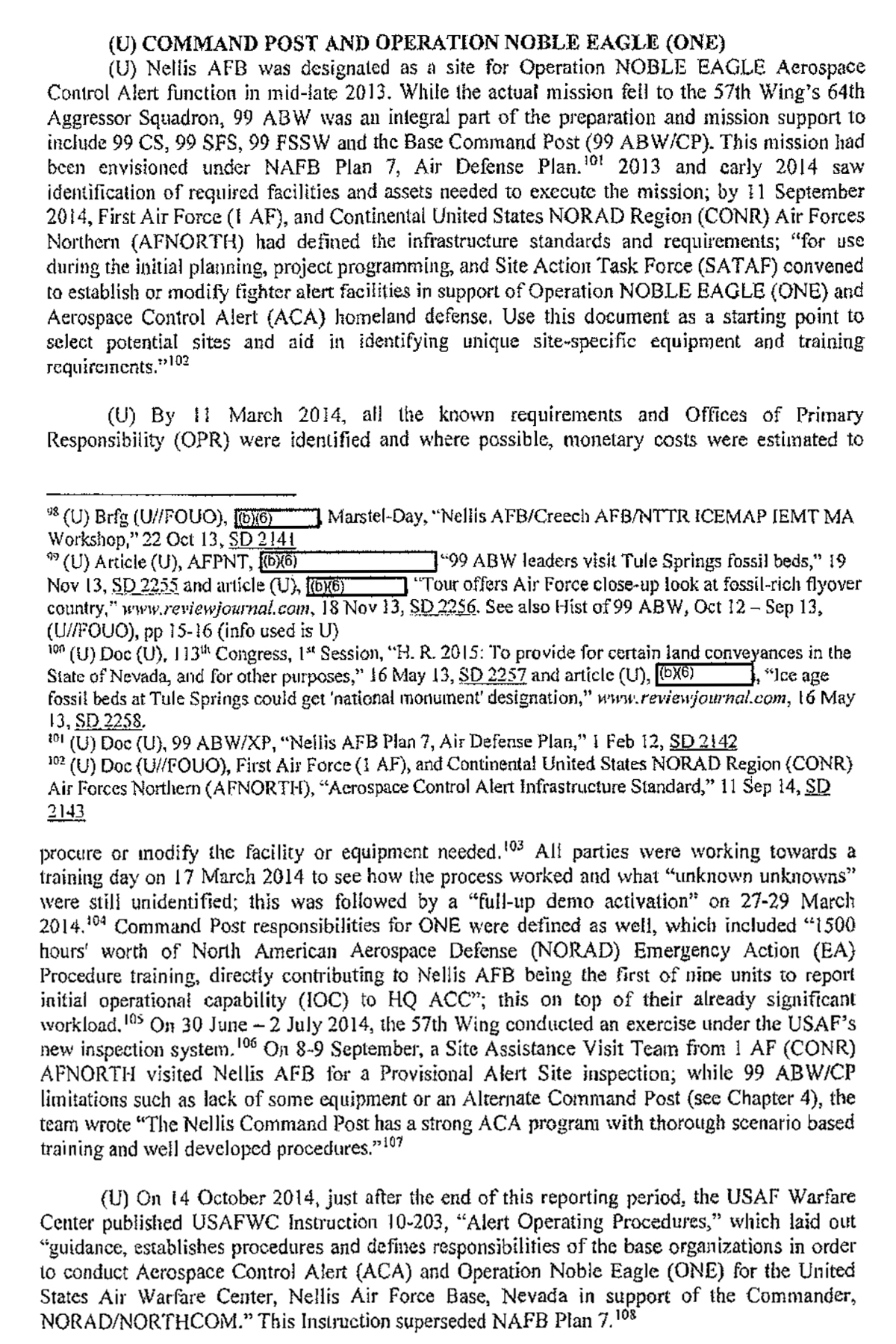
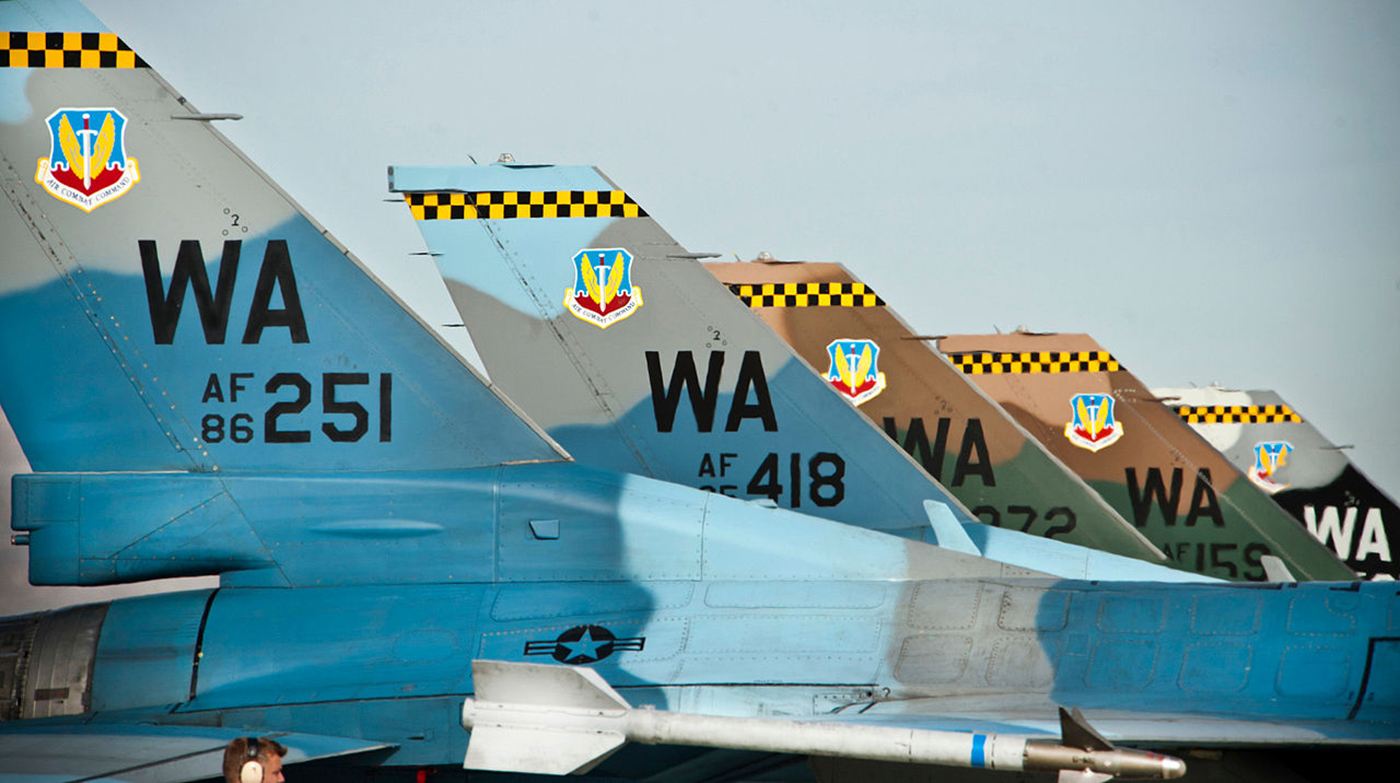
Even though Nellis AFB houses every fighter type in the USAF’s inventory, there are no front-line “operational” fighter squadrons based there. The 64th Aggressor Squadron, with their fleet of Block 32 F-16Cs may not seem like an ideal fit for the air sovereignty mission, but it is the logical choice as there are really no alternatives. Also, the unit has been significantly augmented since its sister squadron, the F-15C/D Eagle flying 65th Aggressor Squadron, was shuttered as part of rampant budget cuts that occurred earlier in the decade. Still, the idea that the unit’s eclectic looking jets would be flying air patrols over America’s southwest seems odd to say the least.
The War Zone reached out to Nellis AFB for more information on the 64th AGRS’s secretive “other” mission. We got very little elaboration on our questions, but the unique squadron’s association with the air defense mission did become a bit clearer.
The 64th AGRS does not sit continuous alert, and has not had to take up an alert posture since acquiring the mission a few years ago, although according to base officials “they could be tasked to support this activity, as required by higher headquarters.” When asked about the unit’s capacity to do so, the only reply we received was that “tasking specifics are classified.” The unit was chosen for the mission because “aircraft availability and capability met the requirements for mission.” In addition they added that “typically Nellis provides facilities as an alert location and other units from outside Nellis deploy here to support the requirements. The 64th AGRS only support when other units are not available or tasking requires more aircraft than can be provided by the deployed unit.”
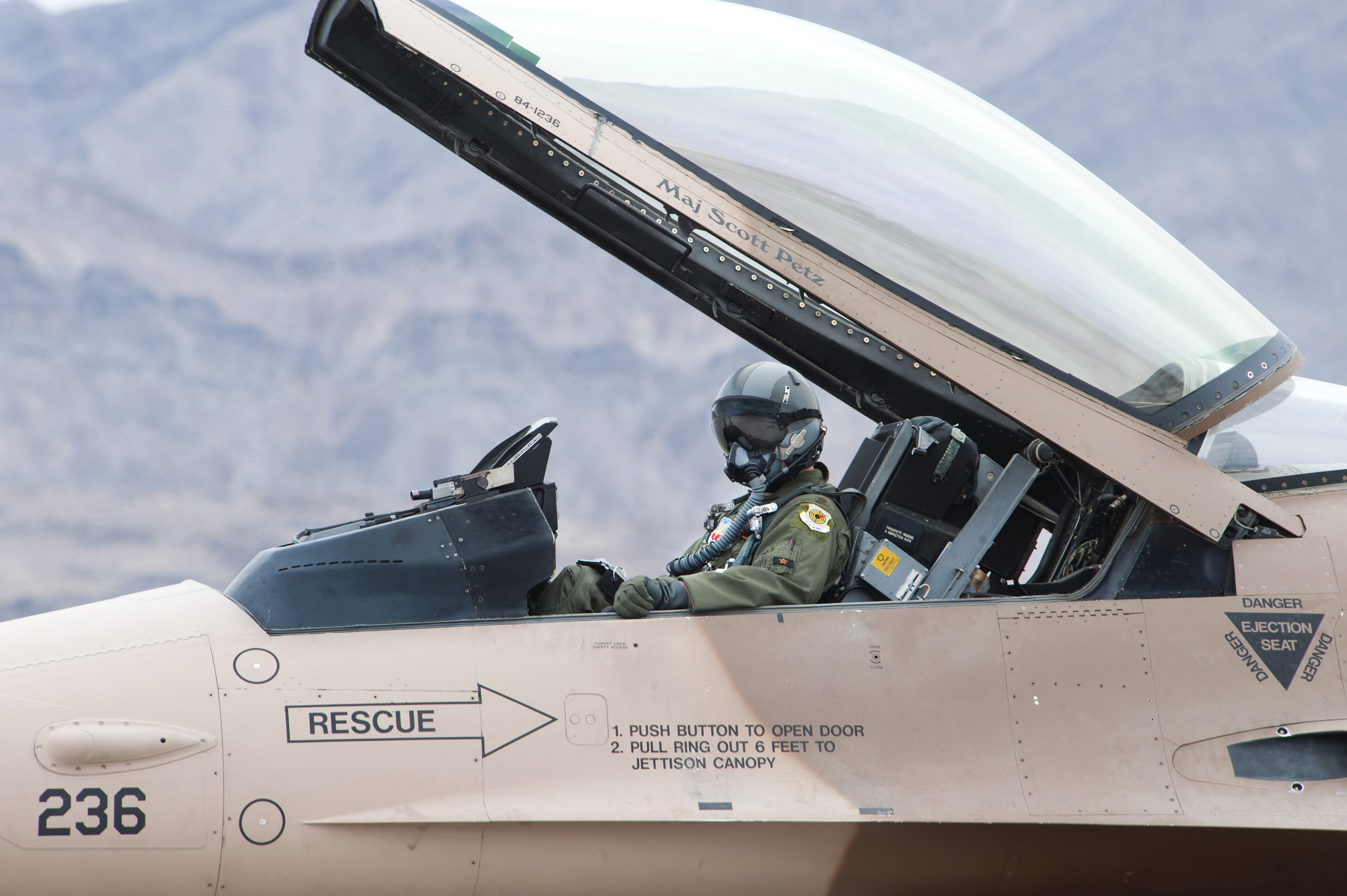
So it seems that the 64th AGRS stands ready to support the air sovereignty mission, but doesn’t do it on a regular basis. What is a bit puzzling is that Nellis really doesn’t seem to have a dedicated alert facility per se. And in recent decades the base has not been known, at least publicly, to support rotating fighter contingents tasked with providing air defense capabilities. Also, it really isn’t clear if this alert duty could include remote alert sites at other nearby bases that fall under Nellis AFB’s control or are directly affiliated with the base in other ways.
For instance, alert aircraft could be positioned at Creech AFB, just 40 miles northwest of Nellis AFB. And we do know that F-16s are omnipresent at Area 51. Nobody knows exactly what all the purposes of these aircraft are, but flying chase for test sorties seems to be one function, and defending the Nellis Range Complex and especially high-security “box” around Area 51 from intruders could be another. The base has HH-60G Pave Hawks that perform perimeter security functions as well. Even shadowy Tonopah Test Range Airport, located at the northern reaches of the range complex, could be a site where F-16s can be temporarily deployed for the air defense mission, although we have no proof that fighters frequent the field for that purpose.
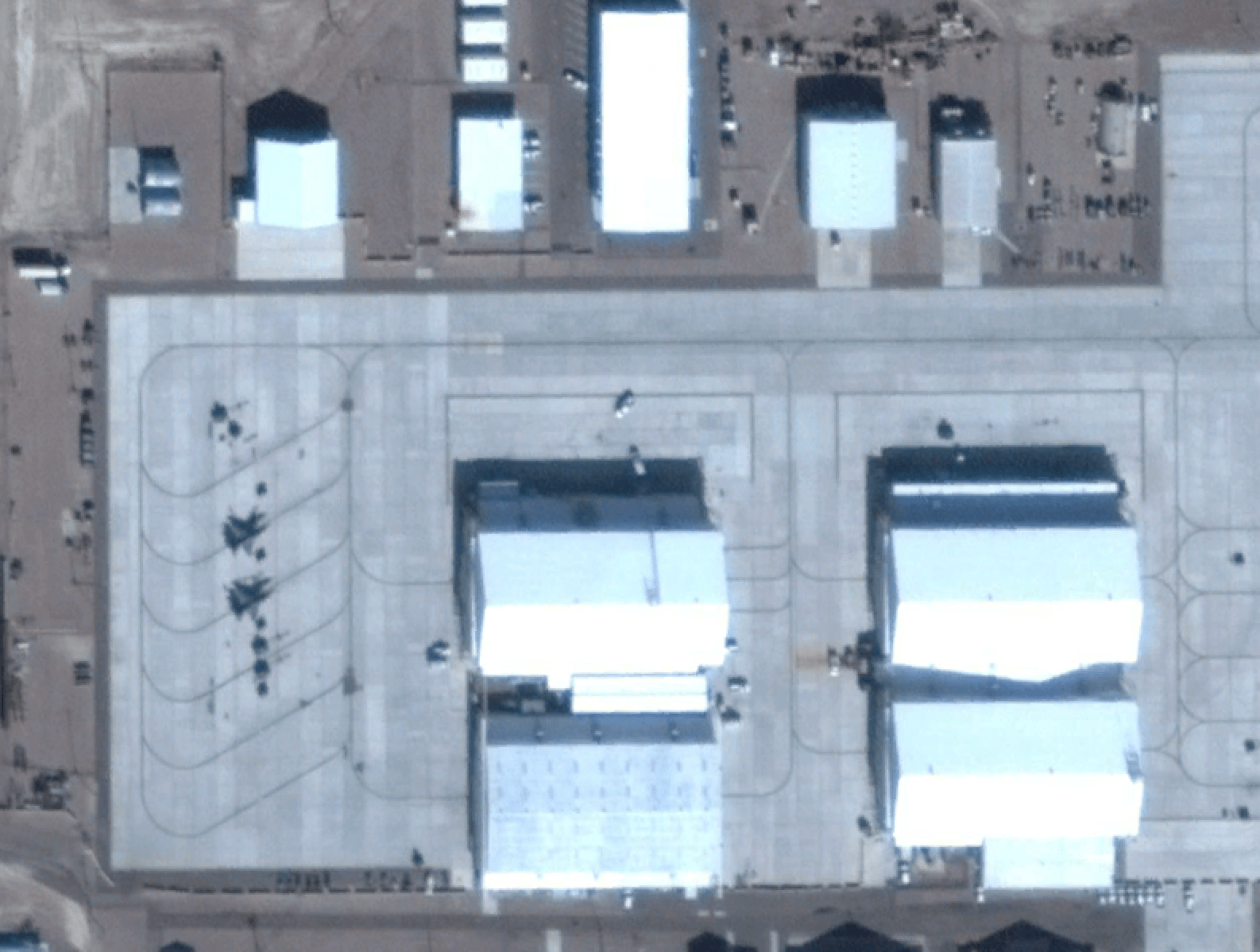
Regardless of the fine details, at least we now know that the USAF’s highly touted Nellis Aggressors do have a secondary set of responsibilities—sweeping the skies for hostile aircraft during a real-world national emergency. And although their aircraft are the most dated and least capable F-16s in the inventory, their pilots are the very best of the best.
Still, their paint jobs may be a little confusing, if not downright startling for any errant aircraft they intercept. On the other hand, in a fantastical Red Dawn like scenario, those same paint jobs may confuse the enemy just long enough to get the kill.
Contact the author: Tyler@thedrive.com
